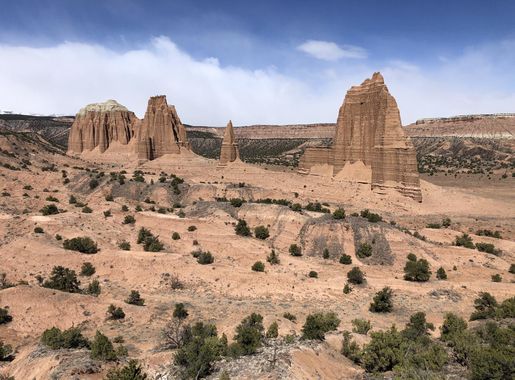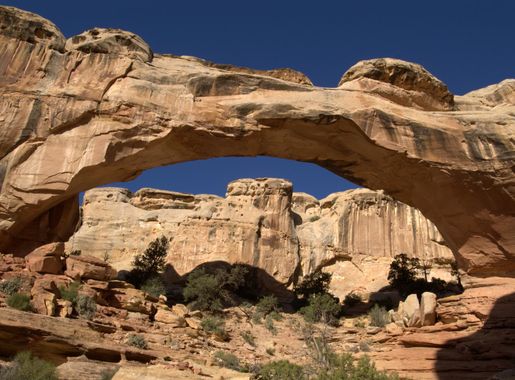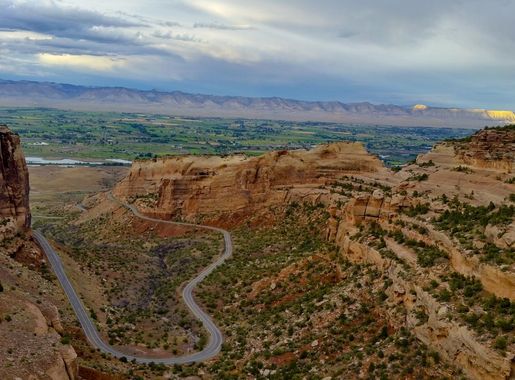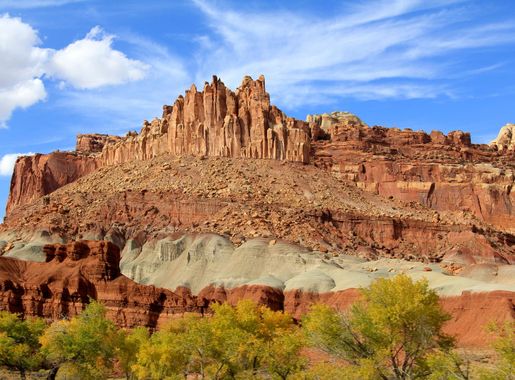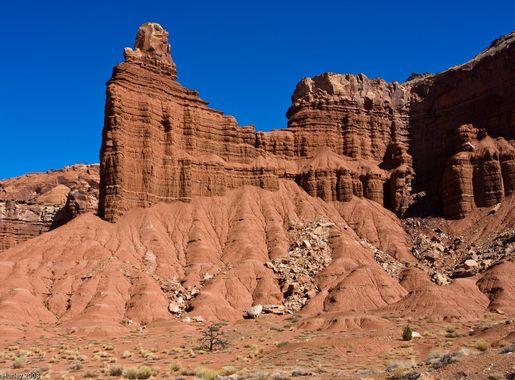
The Majestic Wonderland of Capitol Reef National Park
Discover Capitol Reef National Park: A Utah treasure featuring breathtaking geological formations, ancient petroglyphs, and endless outdoor adventures in stunning natural beauty.
Capitol Reef National Park, located in south-central Utah, is a hidden gem of geological wonder. The park stretches for nearly 100 miles and features a unique combination of cliffs, canyons, domes, and natural bridges. At the heart of Capitol Reef is the Waterpocket Fold, a striking warp in the earth’s crust that offers stunning vistas and dramatic landscapes. One of the highlights of the park is the Capitol Dome, named for its resemblance to the U.S. Capitol building. This iconic white sandstone formation is a must-see. The park also boasts ancient petroglyphs, left behind by the Fremont culture, providing a glimpse into the history of the area. Scenic drives such as the Cathedral Valley Loop offer breathtaking views and photo opportunities. For outdoor enthusiasts, Capitol Reef offers a range of activities including hiking, camping, and stargazing. Trails like the Hickman Bridge Trail and Cassidy Arch Trail cater to different levels of hikers, ensuring that everyone can enjoy the beauty of this national park. The clear night skies make Capitol Reef a prime location for astronomy lovers, with minimal light pollution providing perfect starry nights.
Local tips in Capitol Reef National Park
- Visit in spring or fall for the best weather and fewer crowds.
- Bring plenty of water and sun protection, as the park can get very hot.
- Check road conditions before driving to remote areas like Cathedral Valley.
- Don't miss the petroglyphs along the Scenic Drive for a peek into ancient history.
- Take advantage of the clear skies for stargazing; the park is a designated dark sky area.
The Majestic Wonderland of Capitol Reef National Park
Capitol Reef National Park, located in south-central Utah, is a hidden gem of geological wonder. The park stretches for nearly 100 miles and features a unique combination of cliffs, canyons, domes, and natural bridges. At the heart of Capitol Reef is the Waterpocket Fold, a striking warp in the earth’s crust that offers stunning vistas and dramatic landscapes. One of the highlights of the park is the Capitol Dome, named for its resemblance to the U.S. Capitol building. This iconic white sandstone formation is a must-see. The park also boasts ancient petroglyphs, left behind by the Fremont culture, providing a glimpse into the history of the area. Scenic drives such as the Cathedral Valley Loop offer breathtaking views and photo opportunities. For outdoor enthusiasts, Capitol Reef offers a range of activities including hiking, camping, and stargazing. Trails like the Hickman Bridge Trail and Cassidy Arch Trail cater to different levels of hikers, ensuring that everyone can enjoy the beauty of this national park. The clear night skies make Capitol Reef a prime location for astronomy lovers, with minimal light pollution providing perfect starry nights.
When is the best time to go to Capitol Reef National Park?
Iconic landmarks you can’t miss
Grand Staircase-Escalante National Monument
Explore the breathtaking landscapes and rich biodiversity of Grand Staircase-Escalante National Monument, a true gem of Utah's natural beauty and outdoor adventure.
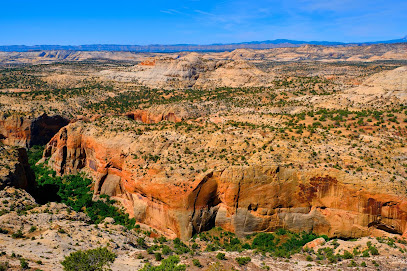
Capitol Reef National Park Visitor Center
Explore the breathtaking landscapes and rich heritage at Capitol Reef National Park Visitor Center, your gateway to adventure in Utah's stunning wilderness.

Capitol Reef Resort
Discover the tranquility of Capitol Reef Resort, the perfect base for exploring Capitol Reef National Park's breathtaking landscapes.
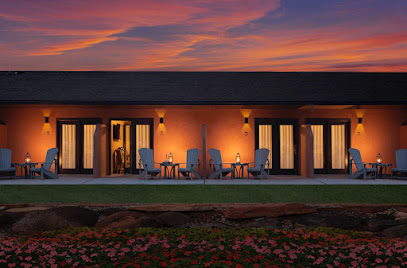
Panorama Point
Explore the stunning vistas of Panorama Point, a premier scenic spot in Capitol Reef National Park, Utah, perfect for nature lovers and photographers alike.
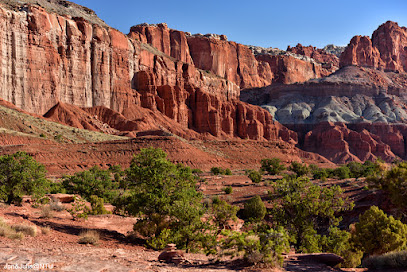
Gifford Homestead
Explore the rich heritage of Gifford Homestead, a historical gem in Capitol Reef National Park, showcasing pioneer life and stunning natural beauty.
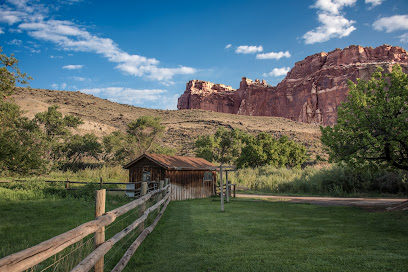
Goosenecks Overlook
Discover the mesmerizing views at Goosenecks Overlook, a breathtaking vista in Torrey, Utah, part of the stunning Capitol Reef National Park.
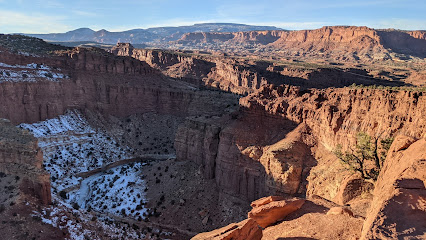
Hickman Natural Bridge
Experience the breathtaking beauty of Hickman Natural Bridge, a stunning natural arch in Capitol Reef National Park, Utah's scenic treasure.
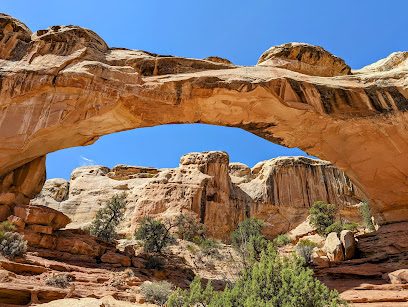
Cassidy Arch
Experience the awe-inspiring beauty of Cassidy Arch, a natural wonder in Capitol Reef National Park, perfect for hikers and nature lovers seeking adventure.
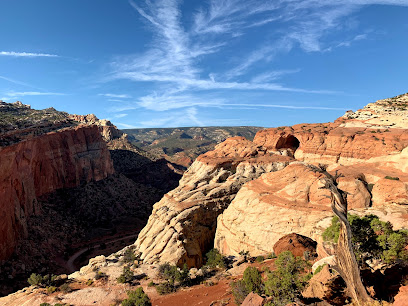
Pioneer Register
Explore the Pioneer Register, a historical treasure in Capitol Reef National Park, showcasing inscriptions of early settlers against stunning landscapes.
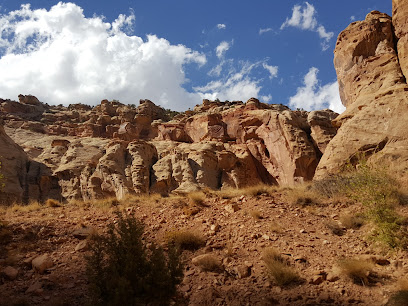
Capitol Reef
Experience the breathtaking beauty and unique geology of Capitol Reef National Park, a hidden gem in Utah perfect for adventure and exploration.
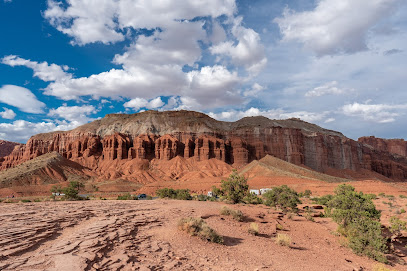
Temple of the Sun
Discover the breathtaking beauty of the Temple of the Sun, a stunning mountain peak in Utah’s Capitol Reef National Park, perfect for adventure seekers and nature lovers.
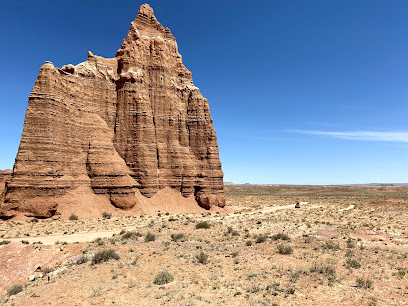
Halls Creek Narrows
Discover the stunning beauty and adventure of Halls Creek Narrows in Torrey, Utah, a must-visit destination for nature lovers and outdoor enthusiasts.
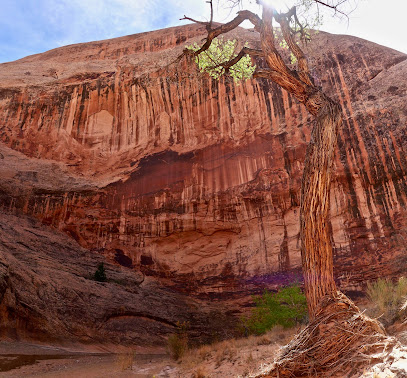
Unmissable attractions to see
Arches National Park
Experience the breathtaking beauty of Arches National Park, home to thousands of stunning natural stone arches and captivating desert landscapes.
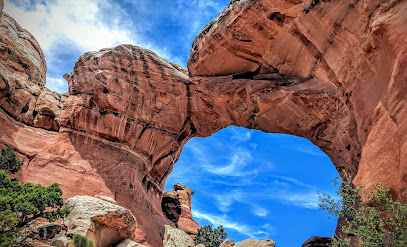
Glen Canyon National Recreation Area
Discover the breathtaking beauty of Glen Canyon National Recreation Area, where adventure meets nature amidst stunning landscapes in Utah.

Canyonlands National Park
Discover the breathtaking landscapes and adventurous trails at Canyonlands National Park, a true gem in Utah's natural wonders.
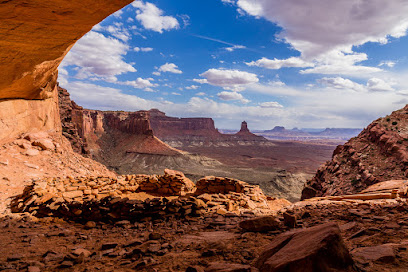
Grand Staircase-Escalante National Monument
Experience the breathtaking landscapes and rich history of Grand Staircase-Escalante National Monument in Utah, a must-visit for nature lovers and adventurers.
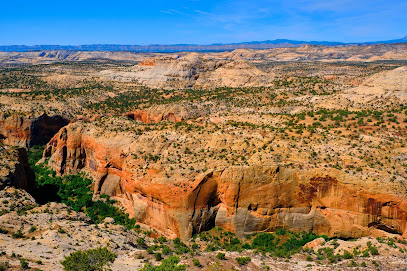
Mesa Arch
Experience the breathtaking beauty of Mesa Arch in Canyonlands National Park, where stunning vistas and natural wonders await every visitor.
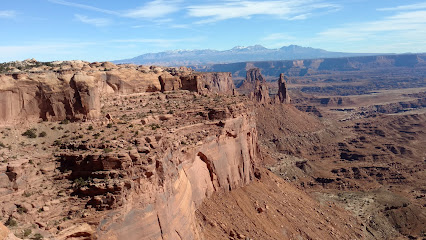
Hole 'N' The Rock
Explore the unique blend of natural beauty and artistic expression at Hole 'N' The Rock, a must-visit attraction near Moab, Utah.
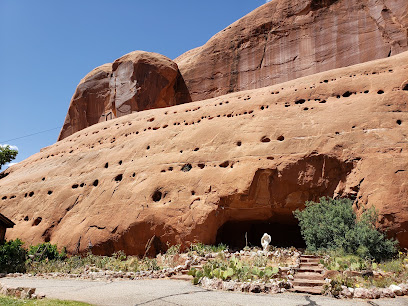
Capitol Reef National Park Visitor Center
Explore the breathtaking Capitol Reef National Park Visitor Center – your gateway to Utah's stunning natural beauty and rich cultural history.
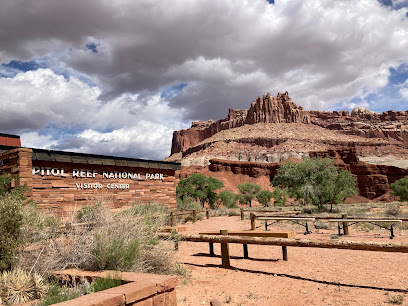
Double Arch
Explore the breathtaking Double Arch at Arches National Park, a stunning natural masterpiece in Utah's red rock country offering unforgettable views and adventure.
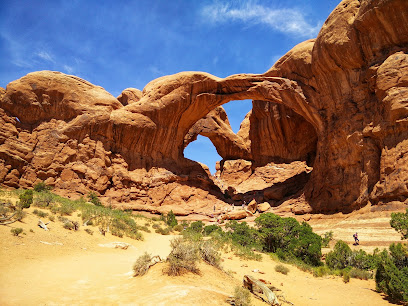
Green River Overlook
Discover the stunning vistas of the Green River Overlook in Moab, Utah, where nature's beauty unfolds in breathtaking panoramic views.
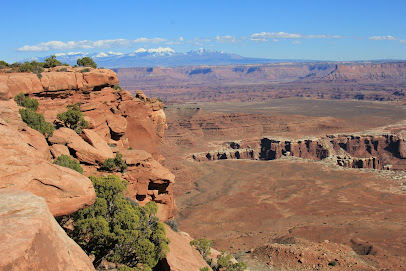
Natural Bridges National Monument
Experience the breathtaking beauty of Natural Bridges National Monument in Utah, home to stunning rock formations and rich history.
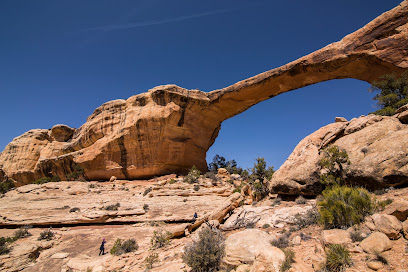
Kodachrome Basin State Park
Explore the stunning geological formations and vibrant landscapes of Kodachrome Basin State Park in Utah, a paradise for nature lovers and adventurers.

Natural Bridge
Explore the Natural Bridge in Bryce Canyon National Park, a breathtaking natural wonder showcasing stunning geological formations and vibrant landscapes.
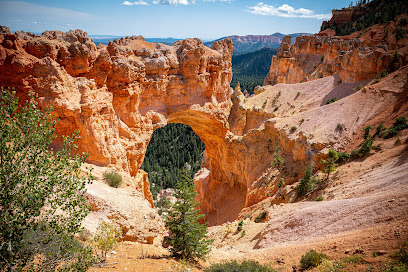
Fremont Indian State Park and Museum
Explore the beauty and history of Fremont Indian State Park and Museum, where Utah's stunning landscapes meet rich Native American heritage.
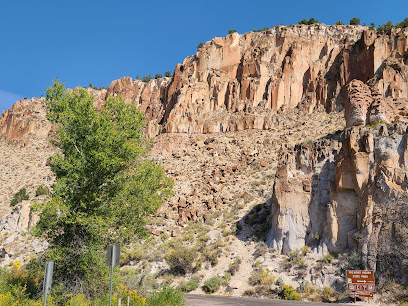
Panorama Point
Discover the awe-inspiring vistas at Panorama Point in Utah, a scenic spot perfect for nature lovers and photography enthusiasts seeking tranquility.
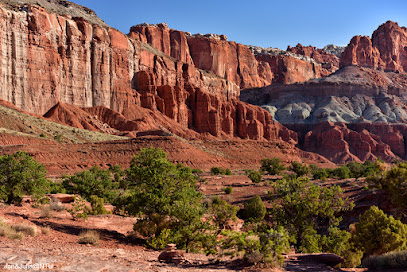
Gifford Homestead
Discover the rich history and stunning landscapes of Gifford Homestead in Capitol Reef National Park, a perfect blend of nature and heritage.
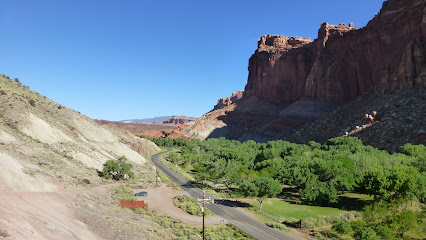
Essential places to dine
Capitol Reef National Park
Explore Capitol Reef National Park: A Stunning Blend of Nature's Wonders and Rich Cultural Heritage in Utah's Scenic Landscape.
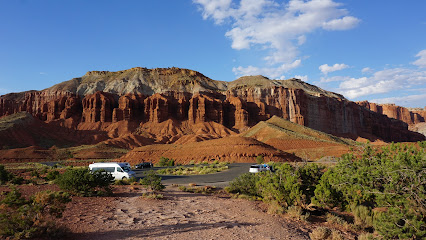
Capitol Reef National Park Visitor Center
Explore Capitol Reef National Park Visitor Center: Your gateway to stunning landscapes and rich geological history in Utah.
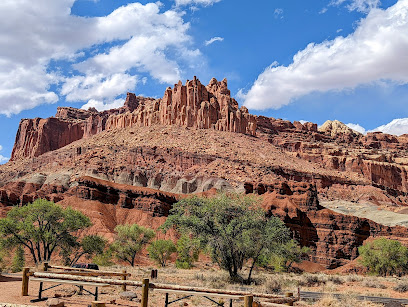
Capitol Reef Resort
Discover tranquility at Capitol Reef Resort—your gateway to adventure and relaxation amidst Utah's stunning landscapes.
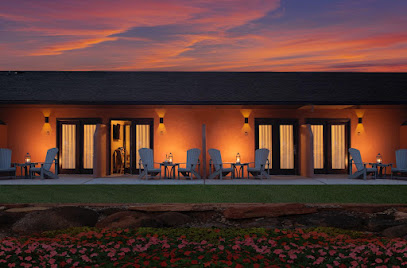
Gifford Homestead
Experience pioneer history at Gifford Homestead in Capitol Reef National Park - where nature meets heritage.
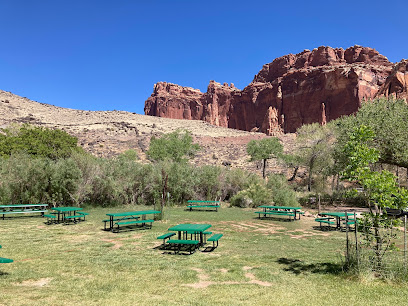
Subway
Enjoy fresh and customizable sandwiches at Subway in Bryce Canyon City - perfect for adventurers exploring Utah's natural wonders.
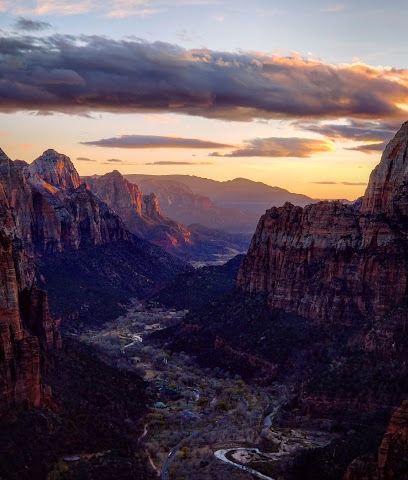
Rim Rock Patio
Discover delicious American cuisine and pizza at Rim Rock Patio in Torrey, Utah—your perfect dining stop near Capitol Reef National Park.
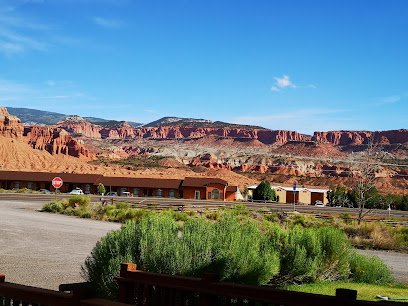
Capital Reef Rest Stop / Picnic Area
Experience tranquility at Capital Reef Rest Stop - your perfect picnic escape in Utah's breathtaking landscapes.
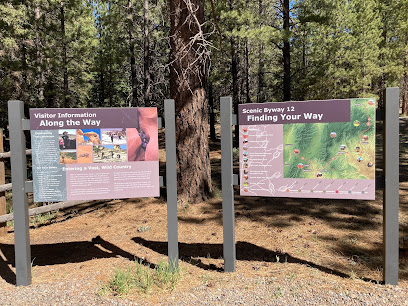
Markets, malls and hidden boutiques
Capitol Reef National Park
Explore the breathtaking vistas and geological wonders of Capitol Reef National Park, a must-visit destination for nature lovers and adventurers alike.
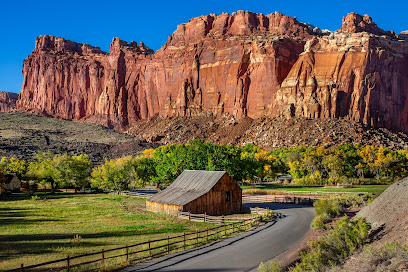
Hole 'N' The Rock
Explore the unique Hole 'N' The Rock in Moab, Utah – a captivating gift shop and zoo amidst stunning natural beauty.
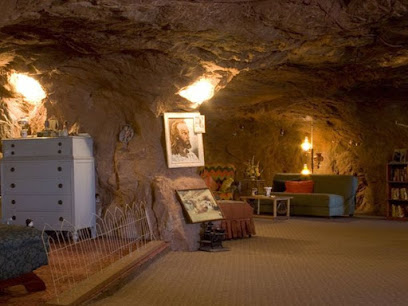
Capitol Reef National Park Visitor Center
Explore the natural beauty of Capitol Reef National Park from the Visitor Center, your essential starting point for adventure in Utah's stunning landscapes.
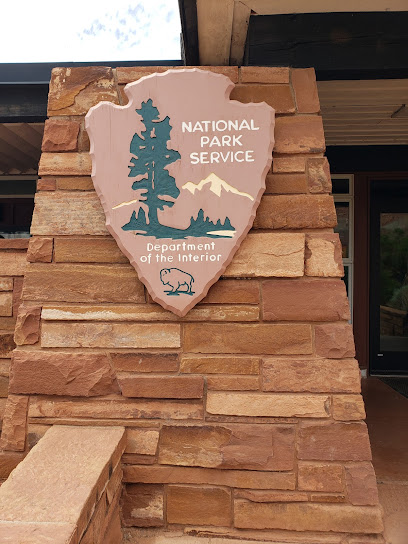
Capitol Reef Resort
Experience luxury and adventure at Capitol Reef Resort, where stunning landscapes meet comfort in the heart of Utah's national park.
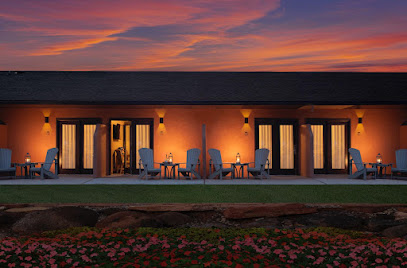
Escalante Outfitters
Discover Escalante Outfitters: Your all-in-one destination for dining, lodging, and adventure gear in the heart of Utah's stunning landscapes.
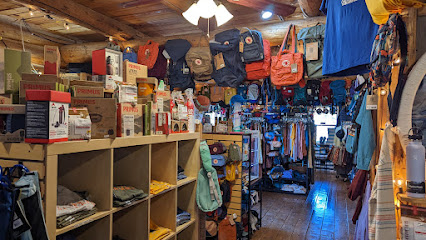
Kiva Koffeehouse
Experience the perfect blend of locally sourced coffee and stunning views at Kiva Koffeehouse in Escalante, Utah.
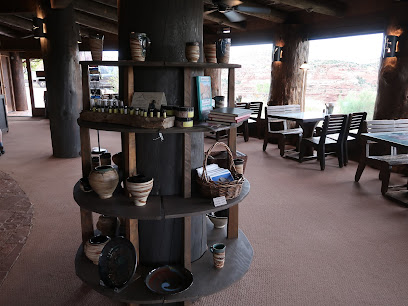
Everything Utah
Explore Everything Utah: Your one-stop gift shop for authentic local art, books, and unique souvenirs in the heart of Salt Lake City.
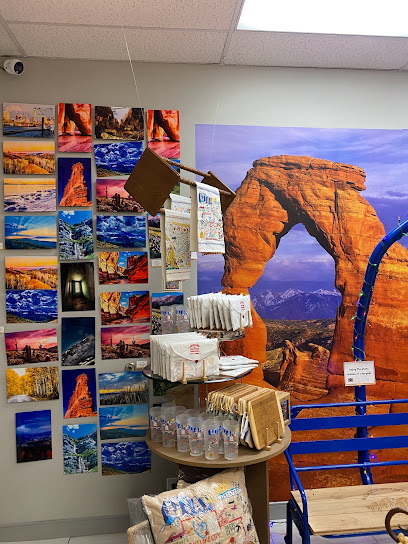
The Rock Stop
Explore The Rock Stop in Orderville, Utah - a unique gift shop offering stunning geological specimens, delightful coffee, and local treasures.
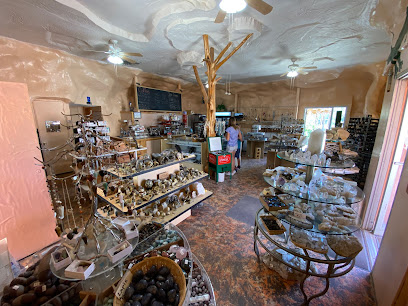
Gifford Homestead
Explore the Gifford Homestead, a historic treasure in Capitol Reef National Park with captivating stories, local goods, and stunning landscapes.
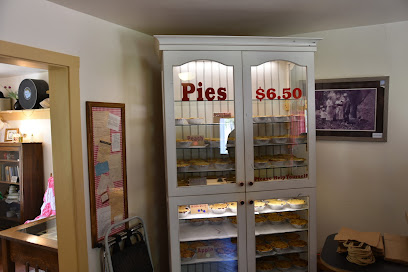
The Wild Rabbit Cafe
Experience the charm of The Wild Rabbit Cafe, a delightful eatery in Torrey, Utah, serving fresh, locally sourced meals in a cozy setting.
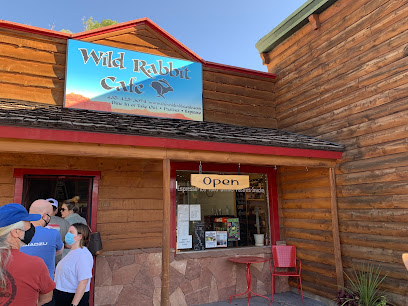
Chuck Wagon General Store
Explore the nostalgic charm of Chuck Wagon General Store in Torrey, Utah, where local goods meet warm hospitality in a picturesque setting.

Dark Sky Coffee
Experience the perfect blend of exceptional coffee and breathtaking views at Dark Sky Coffee in Torrey, Utah.
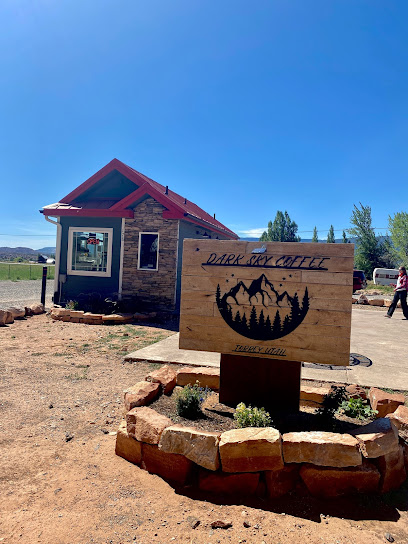
Salt & Honey Market
Explore Salt & Honey Market in Salt Lake City for unique gifts, local art, and a charming shopping experience that embodies the spirit of Utah.

Cassidy Arch
Explore Cassidy Arch in Utah, a stunning natural formation offering breathtaking views and memorable hiking experiences in the heart of nature's beauty.
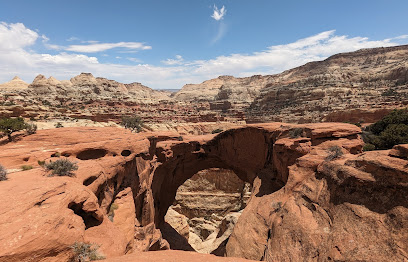
Flute Shop Trading Post and Motel
Explore the Flute Shop Trading Post and Motel in Torrey, Utah for unique gifts and cozy accommodations amidst stunning landscapes.
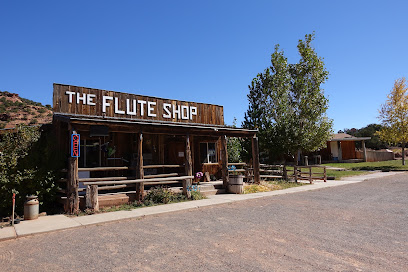
Essential bars & hidden hideouts
Ray's Tavern
Explore Green River's local flavors at Ray's Tavern, where delicious burgers and friendly vibes await every traveler.
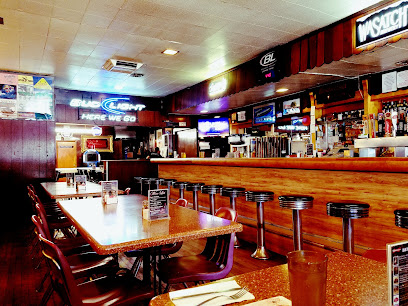
Stan's Burger Shak
Savor the best burgers in Hanksville, Utah, at Stan's Burger Shak – where flavor meets adventure in every bite!

Broken Spur Inn & Steakhouse
Experience the perfect blend of comfort and gourmet dining at Broken Spur Inn & Steakhouse in the heart of scenic Torrey, Utah.
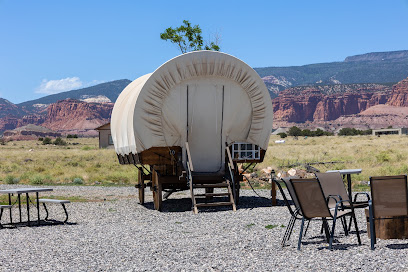
Slackers Burger Joint
Experience the delicious taste of burgers and sandwiches at Slackers Burger Joint in Torrey, Utah - a perfect stop for hungry travelers.
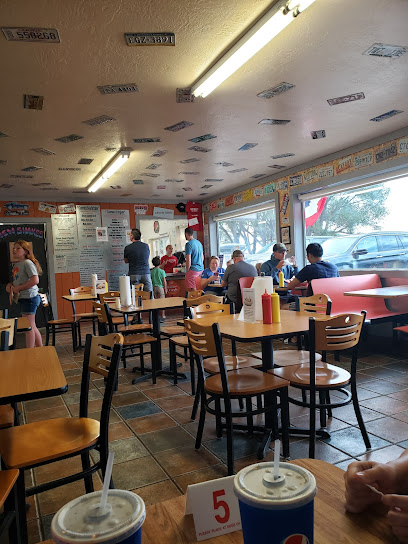
Hell's Backbone Grill & Farm
Experience the essence of Utah's culinary landscape at Hell's Backbone Grill & Farm, where organic flavors meet breathtaking scenery.
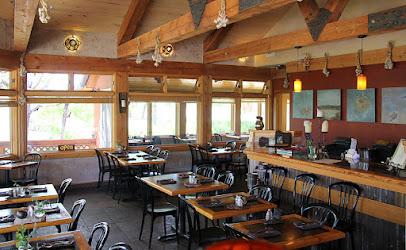
Duke's Slickrock Grill
Discover Duke's Slickrock Grill: A Barbecue Haven in Hanksville, Utah, Offering Delicious American Cuisine and Unforgettable Flavors.

Burr Trail Grill
Experience the unique flavors of American cuisine at Burr Trail Grill, where every bite is a taste of Utah's culinary excellence amidst stunning landscapes.
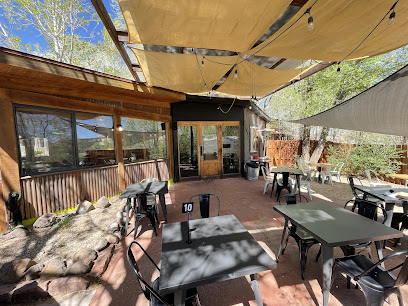
Outlaw's Roost
Discover the heart of Hanksville at Outlaw's Roost, where hearty meals and local charm await every traveler.

Bar 86
Experience the vibrant flavors of Richfield at Bar 86, where grilled perfection meets a welcoming atmosphere.
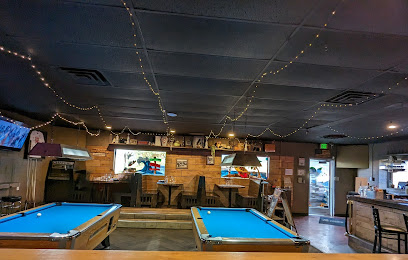
Capitol Burger
Discover the ultimate burger experience at Capitol Burger in Torrey, Utah, where flavorful meals meet breathtaking scenery.
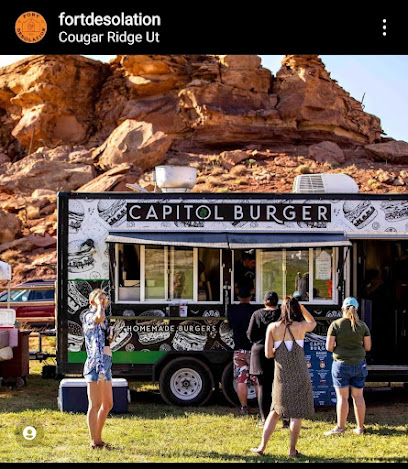
The Wild Rabbit Cafe
Experience the charm and flavors of Torrey, Utah at The Wild Rabbit Cafe, where delicious meals and warm hospitality await every visitor.
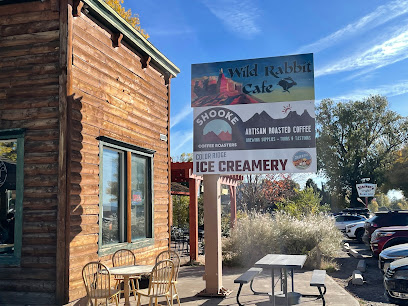
Red Sands Hotel and Spa
Experience comfort and adventure at Red Sands Hotel and Spa, your gateway to the stunning landscapes of Torrey, Utah.
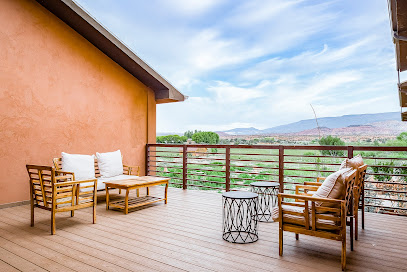
Rim Rock Restaurant
Discover the exquisite flavors of Rim Rock Restaurant, where fine dining meets the stunning beauty of Torrey, Utah.
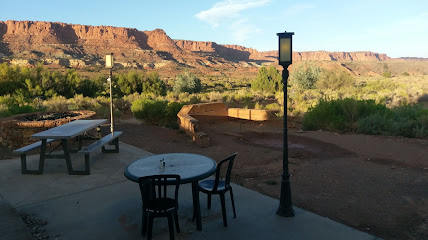
Rim Rock Patio
Discover the charm of Rim Rock Patio in Torrey, Utah, where delicious American cuisine and stunning outdoor views create unforgettable dining experiences.
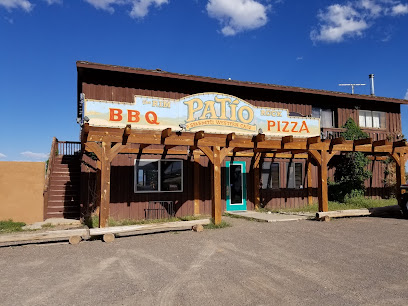
SunGlow Motel and Family Restaurant
Experience the perfect blend of comfort and unique cuisine at SunGlow Motel and Family Restaurant in Bicknell, Utah.

Local Phrases about Capitol Reef National Park
-
- HelloHowdy
[haʊ-di] - GoodbyeSee ya
[siː jə] - YesYup
[jʌp] - NoNah
[nɑː] - Please/You're welcomePlease/No worries
[pliːz/nəʊ ˈwʌriz] - Thank youThanks a bunch
[θæŋks ə bʌntʃ] - Excuse me/SorryPardon me/My bad
[ˈpɑːrdn miː/maɪ bæd] - How are you?Howdy partner?
[haʊ-di ˈpɑːrtnər] - Fine. And you?Just peachy. You?
[dʒʌst ˈpiːtʃi juː] - Do you speak English?Y'all speak English?
[jɔːl spiːk ˈɪŋɡlɪʃ] - I don't understandI ain't catchin' on
[aɪ eɪnt ˈkætʃɪn ɒn]
- HelloHowdy
-
- I'd like to see the menu, pleaseCan I take a gander at the grub, please
[kæn aɪ teɪk ə ˈɡændər æt ðə ɡrʌb pliːz] - I don't eat meatI ain't a meat eater
[aɪ eɪnt ə miːt ˈiːtər] - Cheers!Bottoms up!
[ˈbɒtəmz ʌp] - I would like to pay, pleaseLet me settle up, please
[let miː ˈsɛtl ʌp pliːz]
- I'd like to see the menu, pleaseCan I take a gander at the grub, please
-
- Help!SOS!
[ɛs oʊ ɛs] - Go away!Scram!
[skræm] - Call the Police!Get the sheriff!
[ɡɛt ðə ˈʃɛrɪf] - Call a doctor!Fetch the doc!
[fɛtʃ ðə dɒk] - I'm lostI'm all turned around
[aɪm ɔːl tɜːnd əˈraʊnd] - I'm illI'm under the weather
[aɪm ˈʌndər ðə ˈwɛðər]
- Help!SOS!
-
- I'd like to buy...I reckon I'll snag...
[aɪ ˈrɛkən aɪl snæɡ] - I'm just lookingI'm just browsin'
[aɪm dʒʌst ˈbraʊzɪn] - How much is it?What's the damage?
[wɒts ðə ˈdæmɪdʒ] - That's too expensiveThat costs an arm and a leg
[ðæts tuː ɪkˈspɛnsɪv] - Can you lower the price?Can ya cut me a deal?
[kæn jə kʌt miː ə diːl]
- I'd like to buy...I reckon I'll snag...
-
- What time is it?What's the hour?
[wɒts ðə ˈaʊər] - It's one o'clockIt's high noon
[ɪts haɪ nuːn] - Half past (10)Ten-thirty
[tɛn-ˈθɜːrti] - MorningSunup
[ˈsʌnʌp] - AfternoonSundown
[ˈsʌndaʊn] - EveningSunset
[ˈsʌnsɛt] - YesterdayThe day afore
[ðə deɪ əˈfɔːr] - TodayThis day
[ðɪs deɪ] - TomorrowMorrow
[ˈmɒrəʊ] - 1One
[wʌn] - 2Two
[tuː] - 3Three
[θriː] - 4Four
[fɔːr] - 5Five
[faɪv] - 6Six
[sɪks] - 7Seven
[ˈsɛvən] - 8Eight
[eɪt] - 9Nine
[naɪn] - 10Ten
[tɛn]
- What time is it?What's the hour?
-
- Where's a/the...?Where's the...
[wɛəz ðə] - What's the address?What's the locale?
[wɒts ðə ləʊˈkeɪʃən] - Can you show me (on the map)?Can you point me out (on the map)?
[kæn jə pɔɪnt miː aʊt ɒn ðə mæp] - When's the next (bus)?When's the next ride?
[wɛnz ðə nɛkst raɪd] - A ticket (to ....)A pass (to ....)
[ə pæs tuː]
- Where's a/the...?Where's the...
History of Capitol Reef National Park
-
Capitol Reef National Park's striking landscape is primarily shaped by the Waterpocket Fold, a nearly 100-mile long monocline that was formed between 50 and 70 million years ago. This geological marvel, also known as a 'wrinkle on the earth,' was created by the same tectonic forces that uplifted the Rocky Mountains. Over millions of years, erosion by wind and water sculpted the dramatic cliffs, canyons, domes, and bridges that visitors see today.
-
The Fremont people inhabited the area that is now Capitol Reef National Park from approximately 300 to 1300 CE. They were primarily agriculturalists, cultivating corn, beans, and squash, and supplementing their diet with hunting and gathering. Evidence of their presence is found in the form of petroglyphs and pictographs etched and painted on rock faces, as well as in the remnants of their pit houses and granaries. These ancient artworks provide a window into the lives and beliefs of this indigenous culture.
-
Following the decline of the Fremont culture, the Paiute and Ute tribes inhabited the region. These Native American tribes were more nomadic than their Fremont predecessors, relying on hunting, fishing, and gathering for sustenance. Their knowledge of the land and its resources allowed them to thrive in the harsh desert environment. Today, their legacy is preserved in the oral histories and traditions passed down through generations.
-
The first recorded European explorers to visit the Capitol Reef area were the Spanish missionaries of the Dominguez-Escalante Expedition in 1776. However, it wasn't until the mid-19th century that settlers began to arrive. Mormon pioneers, seeking to expand their communities, established small settlements in the region. The town of Fruita, founded in 1880, became a central hub, with its residents planting orchards and farming the fertile valley along the Fremont River.
-
Capitol Reef was first designated as a national monument by President Franklin D. Roosevelt on August 2, 1937. The initial monument covered nearly 37,000 acres and was largely focused on protecting the Waterpocket Fold and its unique geological features. This designation brought increased attention and visitation to the area, leading to further conservation efforts and infrastructure development.
-
Over the following decades, Capitol Reef National Monument saw several expansions, eventually encompassing nearly 254,000 acres. On December 18, 1971, President Richard Nixon signed legislation elevating Capitol Reef to national park status, recognizing its diverse landscapes, rich history, and significant cultural heritage. The park now attracts visitors from around the world, offering a glimpse into the natural and human history of this unique region.
Capitol Reef National Park Essentials
-
Capitol Reef National Park is located in south-central Utah. The nearest major airports are Salt Lake City International Airport (approximately 220 miles away) and Grand Junction Regional Airport in Colorado (approximately 160 miles away). From these airports, you can rent a car and drive to the park. The park is accessible via Highway 24, which runs through the heart of Capitol Reef. Public transportation options are limited, so driving is the most convenient way to reach the park.
-
Once inside Capitol Reef National Park, transportation options are limited primarily to personal vehicles. There are no shuttle services within the park. The scenic drive along Capitol Reef’s main road, Highway 24, offers numerous pullouts and viewpoints. For exploring more remote areas, a high-clearance vehicle may be necessary. Biking and hiking are also popular ways to explore the park. Ensure you have a detailed map and plenty of water if you plan to venture far from your vehicle.
-
The official currency in the United States is the US Dollar (USD). Credit and debit cards are widely accepted in nearby towns and at the park's visitor center. However, it's a good idea to carry some cash, especially if you plan to visit rural areas outside the park where card payments may not be accepted. ATMs are available in the nearby towns of Torrey and Hanksville.
-
Capitol Reef National Park is generally a safe destination for visitors. However, it is important to take standard precautions such as locking your vehicle and keeping valuables out of sight. The park's remote areas can pose risks due to extreme weather, rough terrain, and wildlife. Always inform someone of your plans, carry sufficient water, and be prepared for sudden weather changes. There are no specific high-crime areas targeting tourists, but always stay vigilant and aware of your surroundings.
-
In case of an emergency, dial 911. The park has limited cell phone coverage, so it is advisable to carry a GPS locator or satellite phone if venturing into remote areas. The nearest medical facilities are in the town of Torrey, approximately 11 miles from the park’s visitor center. For minor health issues, carry a well-stocked first-aid kit. Park rangers can provide assistance and are located at the visitor center.
-
Fashion: Do wear comfortable and weather-appropriate clothing. Layers are essential due to temperature fluctuations. Avoid flashy or revealing clothing. Religion: Respect the cultural significance of the park’s petroglyphs and other historical artifacts. Public Transport: There is no public transport within the park, so plan to drive or bike. Greetings: Friendly greetings are common; a simple 'hello' or 'hi' is appropriate. Eating & Drinking: Do bring plenty of water and snacks. Don't leave trash behind; follow the Leave No Trace principles.
-
To experience Capitol Reef National Park like a local, consider visiting during the shoulder seasons of spring and fall when the weather is mild and the crowds are smaller. Explore lesser-known trails such as Cohab Canyon and Cassidy Arch for a quieter experience. Don't miss the historic Fruita area, where you can pick fresh fruit from the orchards in season. Engage with park rangers during interpretive programs to learn more about the park's geology, history, and wildlife.
Trending Landmarks in Capitol Reef National Park
Nearby Cities to Capitol Reef National Park
-
Things To Do in Escalante
-
Things To Do in Bryce Canyon City
-
Things To Do in Richfield
-
Things To Do in Panguitch
-
Things To Do in Green River
-
Things To Do in Beaver
-
Things To Do in Page
-
Things To Do in Huntington
-
Things To Do in Ephraim
-
Things To Do in Moab
-
Things To Do in Blanding
-
Things To Do in Mt Carmel
-
Things To Do in Kanab
-
Things To Do in Price
-
Things To Do in Cedar City


